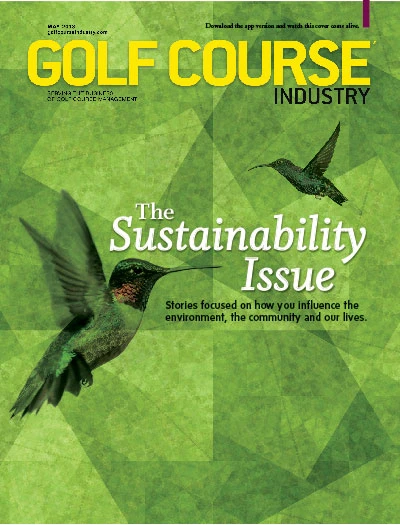 You might say that Currituck Golf Club is for the birds, and you might be right.
You might say that Currituck Golf Club is for the birds, and you might be right.
The facility's location on the Outer Banks of North Carolina makes it home to a wide array of wildlife, including wild horses, deer, raccoons, river otters, turtles and a huge variety of birds. Currituck even means "the land of the wild goose."
As a member of the ClubCorp network of more than 150 golf and country clubs, the Currituck Golf Club is located in Corolla, N.C., on what was known as one of the premier destinations for waterfowl hunting. Today, that same waterfowl is nurtured and preserved.
"We were one of the first clubs in the region to become an Audubon certified golf course," says Mike Terry, golf course superintendent. "We kind of led the charge for the rest of them, so to speak."
The Currituck Golf Club is also known as a leader in using recycled water for irrigation. "We irrigate 66 acres with effluent water from the subdivision nearby; we have a dedicated treatment plant. We also have a large freshwater lake supplemented by well water that we use for greens, tees and any areas that might run or spray off the course," Terry says. "It's a pretty intensive irrigation system – actually two systems side by side."
During migration season, bird lovers swarm the area. Both fall and spring bring an amazing array of more than 400 reported bird species. But it was a baby owl that captivated the hearts of the golf course crew and the staff at the Audubon Society.
"Our cart master, a 20-year employee, was cruising through the back nine and saw a little puff ball on the ground near the 17th hole," recalls Mike Terry, golf course superintendent at the Currituck Club. "He got a range picker basket and lined it with pine straw and hung it in the tree that was there." The owlet was carefully placed in the "nest."
Then they stood back and held their collective breaths. "It stayed there and we saw that it stayed alive," Terry said. They began finding bones and other feeding debris at the foot of the tree. Then one day, they actually saw the mother owl. "She was huge and kind of scary!" Terry laughs.
They watched for a couple months as the owlet matured. "We pretty much left it alone," Terry said. "We just kind of kept an eye on the little fella." The young owl ventured from the nest and was "hopping around in the branches" for a bit.
"Then it took off with the mother owl," Terry finishes. He and the crew have seen an owl back in the area and think that it might be the youngster returning home to breed. "It didn't cost us anything but time. It's just one of those great success stories."
"We do a lot to encourage the wildlife on the course," says Terry. "We create brush pile habitat in the natural areas of the course. We try to be as kind as possible."
Some of the wildlife is more of a challenge than an asset. "We have wild pigs that root around on the course," Terry says.
"The deer can be a problem, too. They ate about $3,000 worth of pansies the first year I was here. I learned not to plant pansies!" he laughs. "The otters get in my ponds and eat up all the fish. But that's okay – you learn to co-exist."
Helen M. Stone is a freelance writer on the West Coast and a frequent GCI contributor.

Explore the May 2013 Issue
Check out more from this issue and find your next story to read.
Latest from Golf Course Industry
- LOKSAND opens North American office
- Standard Golf announces new product lineup for 2025
- The Salt Pond taps Troon for management
- KemperSports selected to manage Swansea Country Club
- From the publisher’s pen: Grab that guide
- Introducing our April 2025 issue
- South Carolina leaders honor golf course superintendent
- One and only





